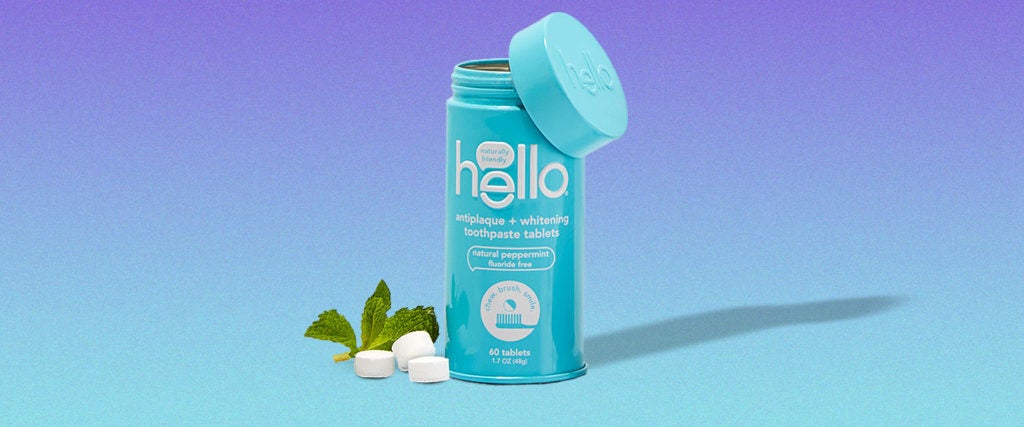Not to be dramatic, but your dirty mouth might be the end of the world. More specifically, the 1.5 billion plastic tubes of toothpaste disposed of in landfills every year place such a strain on the environment that it makes a mouthful of cavities seem somewhat noble. At the very least, it’s driven toothpaste innovators to come up with a more sustainable way to brush and what they’ve landed on is tiny tablets of toothpaste.
“A significant advantage of toothpaste tablets is that they’re a sustainable oral-care solution and a good route for those who are environmentally focused and wanting to reduce plastic waste,” dentist Roselyn Oji tells me.
Beyond the fact that the tablets are packaged in compostable materials, toothpaste tablets also cut down on water waste as well. “Regular toothpaste contains about 50 percent water, and several ingredients are necessary to maintain stability,” dentist Greg Grillo explains. In comparison, toothpaste tablets often include key cleaning ingredients without these extra chemical preservatives. As for the water to make the paste, well, that’s what your spit is for. “The simplified formulation also means less weight and bulk, a benefit to the environment when it comes to shipping and storage,” Grillo says.

The way it works is, instead of squirting your standard Crest or Colgate on a toothbrush, you chew up the chalky tablets, which are somewhere between a Tums and an Aspirin, size-wise. Once the tablet is chewed into a pasty mouth powder, just wet your toothbrush and go to town on your pearly whites. Then you sit back smugly and be satisfied that you and your fresh mouth helped save the earth. Sounds simple, right?

When I tried the Hello Anti-Plaque + Whitening Toothpaste Tablets, chewing my own paste was weird at first, but once I got to brushing, the combination of my spit and the tablets had created a minty lather that was almost familiar. But although my mouth felt better after using them in the morning, it didn’t stay that way. My clean mouth felt like it had a shorter shelf-life, so I continued to try the tablets throughout the day, brushing after snacks and meals, but it still didn’t seem like enough. By the next morning, I was thirsty for Crest.

Part of the reason why my mouth felt so ripe is that most sustainable toothpaste tablets on the market don’t have fluoride. Most of us know it as the gross-tasting gel dentists put in a mouthguard to torture us with, but fluoride serves an important purpose: It’s a mineral that’s added to tap water and traditional toothpaste to make teeth more resistant to plaque and bacteria by strengthening enamel. However, the process of putting fluoride into water and toothpaste causes pollution that could hurt wildlife, so it’s not exactly green. As an alternative, Hello and other toothpaste tablet makers have used xylitol, a chemical most known for being used as a sugar substitute in gum.

Despite some small studies showing that xylitol may help prevent tooth decay, experts at the American Dental Association (ADA) agree that fluoride is best for preventing bacteria and cavities. That said, Grillo and the ADA acknowledge that non-fluoride products are fine for supplemental dental care. In other words, they’re basically better than nothing, but may not be worth it to everyone, depending on your situation (and especially when you figure in the higher price point).
Nonetheless, the pursuit of a more eco-friendly toothpaste remains a noble one. Bigger brands like Colgate have recently pivoted to vegan paste with fluoride in recyclable tubes, and companies like PÄRLA in the U.K. are producing sustainable toothpaste tabs that contain fluoride as well. But until those options become more affordable and industry-standard, going green with dental hygiene could turn your teeth the same color.

